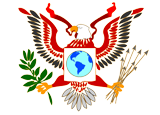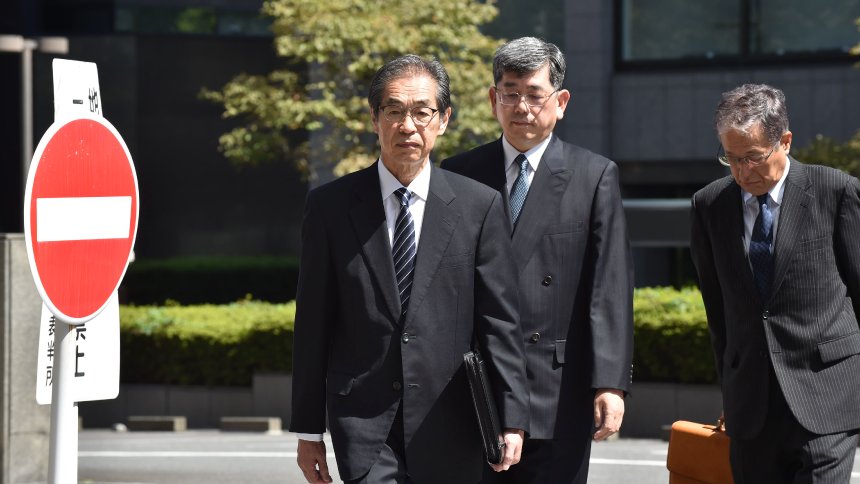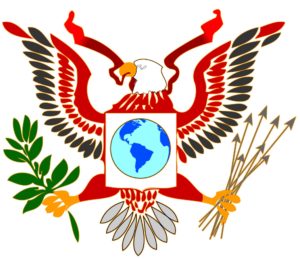“Europeasa Model for De-escalation on the Korean Peninsula”
By Walter SCHWIMMER,
Former Secretary General of the Council of Europe
Chairman of the International Coordinating Committeeof the
World Public Forum – Dialogue of Civilizations
Speaking as former Secretary General of the Council of Europe on de-escalation on the Korean Peninsula, on peace and security in Eastern Asia is a real challenge. For millenniums Europe itself was far away from forming unity and providing peace. On the contrary, the smallest of all continents has been the scene of many wars, some of them called the “100 years war” or the “30 years war”.
The latter involved most of the European countries and was one of the most destructive armed conflicts in history.
Between 1618 and 1648 more than half of the European population died because of direct or indirect consequences of the fighting. In the 20th century this history of bloody conflicts culminated once again in conflicts which became global, 100 years ago Europeans started World War I and 75 years ago World War II. Many historians dealt this year of centenary of WWI with its causes.
I dare to say that there are always the same threats to peace and security: lack of communication, stereotypes and prejudices and ignorance.
Current conflicts, in the Middle East, in Africa, but also in Eastern Europe may persuade us to repeat the saying that history gives lessons all the time, but nobody is learning them.
However there are examples where the lessons of history were not only listened to but were transformed into dialogue, mutual understanding, and at the end to friendship. One example is the process of European unification including the end of the Cold War and the fall of the Berlin Wall. But there are other, in my view exiting examples too.
E.g. South Africa, which was also divided, not in a territorial sense but inside the nation. In all these positive examples you will see three key words and principles: dialogue, reconciliation and truth.
While after World War I it were only a few people who were ready to learn the lessons, during the World War II people started to prepare the new after-war-Europe based on a common cultural and spiritual heritage. It was in the middle of World War II, in 1943, when the famous British statesman Sir Winston Churchill surprised the listeners of his weekly radio address.
He suggested that after the war all nations of Europe including the current enemies should form a “Council of Europe” to unite the continent in peace and through cooperation.
In the aftermath of the horrors of the Second World War, the main concern of the founding fathers of the European unification was to create a system that would ensure lasting peaceful co-operation between all European nations based on common values. Unfortunately the post-war period in Europe was also marked by the political and material division of Europe with the emergence of the iron curtain.
The division, which has had a deep and traumatic impact on Europe, was characterized by an ideological confrontation between two political systems. Europe was breathing, to quote Pope John Paul II, only with one lung.
But beside this deep ideological and military rift Europe could avoid direct military confrontation, I would like to say, also because of the remembrance of the horrors of the WWII.
And in this context I have to pay tribute and bend my knees in front of the victims of the nuclear tragedies of Hiroshima and Nagasaki. Their unimaginable suffering saved the world from further tragic nuclear experiences. And the legacy of the dead or livelong suffering and handicapped people from Hiroshima and Nagasaki must be nuclear disarmament, in particular in Eastern Asia!
But before turning to East Asia and the Korean Peninsula, let me return to the European example.
An important step to overcome the rift in the common home of Europe was the conference on security and cooperation in Europe with the Helsinki accord of 1975 signed by 35 countries including the U.S. and the Soviet Union, that promotes human rights as well as cooperation in economic, social, and cultural progress.The Helsinki accord proved that Europe had still much more in common than what could divide the continent.
The OSCE – Organization for Security and Cooperation in Europe – emerged from the Helsinki Conference.
It plays an important role up to today and is covering Europe, Central Asia and North America except Mexico.Currently the OSCE is monitoring the Ukrainian crisis. The OSCE is not unknown in East Asia as three countries of the region – Japan, Mongolia and South Korea are already partners for cooperation of the OSCE.
14 years later, 1989/1990 dramatic political but peaceful changes swept through Europe as consequence of several factors.
Michael Gorbachev’s perestroika was one of them, the collapse of centrally planned economy in the communist countries was another one. But in my view the most important factor was the people. The peoples of the countries separated from the other part of Europe by the Iron Curtain wanted to choose their governments themselves like in the Western part of Europe.
In my view it was not the end of history as proclaimed by Francis Fukuyama, no, it was the return to the better part of European history.
Central, Eastern and South-eastern Europe could join the path of peace and reconciliation which was chosen by the Western European democracies in the late 40ies and early 50ies of the last century when the Council of Europe and the European Communities were created. The Council of Europe goes back to the already mentioned courageous idea of Winston Churchill and the European Union, former the European Communities, goes back to the idea of French foreign minister Robert Schuman.
The enemies of yesterday should administrate the main resources of armament, coal and steel, together in order to make wars between them impossible.
However, there was also still mistrust among nations in the after-war-decade. And the ideas were not totally new. The Austrian aristocrat with a Japanese mother, Richard Coudenhove-Calerghi, created after the WWI the Paneuropa-movement and proposed United States of Europe.
A programme of European Christian-Democratic Parties in the 30ies spoke about a common market, a term which is familiar to the European Union.
What was essential for the success of these ideas in the aftermath of WWII was that they were accompanied by a large movement of reconciliation or you may call it also spirit of reconciliation. Reconciliation of former enemies has been seen throughout Europe, for example between France and Germany, Austria and Italy, Germany and Poland, Russia and Germany.
This reconciliation is at the same time a prerequisite of European unification as well as a result of it. I do not dare to answer the famous question who was first the chicken or the egg. Reconciliation is taking place also in South Eastern Europe. The enemies of yesterday are sitting together in a Regional Council and are co-operating in a free trade area. I do not want to hide that there are still problems, like the functioning and complicated structures of the common state institutions in Bosnia-Herzegovina and a fair and just solution for all inhabitants of Kosovo.
There are still problems in the Caucasus and the already mentioned Ukrainian and Crimean crisis. But in the spirit of the new Europe dialogue and mutual understanding should help to solve these problems too.
What was decisive that reconciliation could take place, became reality in every day’s live of the nations concerned? These were of course several and different aspects. It needed politicians who were convinced that they couldn’t do more for the security and a live in peace for their nations than to reconcile with the neighbours and enemies of the past.
E.g. it was important for German-Polish and perhaps even more for German-Jewish reconciliation when German Chancellor Willy Brandt fell on Dec.7, 1970 on his knees in front of the monument of the heroes of the Warsaw Ghetto. And it fostered without any doubt the French-German reconciliation when President Charles de Gaulle and Bundeskanzler Konrad Adenauer met on the battle fields of WWI and when the two old men embraced each other after signing the Treaty of Elysee between their countries.
But the sustainable reconciliation happened at grass root level, when more than 8 million young Germans and French participated in the youth exchange or when Italians and Austrians worked together in the mountains of Northern Italy, 2000 to 4000 meters above sea level, to turn the trenches and shelters of WWI into mountain trails.
One may ask whether this concept can be exported or better to say, imported? The African Union, for example, followed already the model of the Council of Europe but with the goal to reach the level of integration of the European Union.
This will of course be not very easy due to different political systems in the member countries and they still face serious conflicts to overcome, may I just refer to Congo and Sudan. But the vision is already there.
The Americans have their Organisation of American states and NAFTA, the free trade zone of USA, Canada and Mexico, South America has Mercosur. In East Asia and the Pacific you will find several attempts to enhanced cooperation, from the Regional Comprehensive Economic Partnership, the Asia-Pacific Economic Cooperation, the Shanghai Cooperation Organisation (without Japan), the South Asian Association for Regional Cooperation (with Japan as observer), to ASEAN, the Association of Southeast Asian Nations and Asian+3, with again Japan, China and South Korea on board.
To some extent these cooperation organisations or entities are still a mirror of political and ideological rifts and differences, some are already crossing ideological dividing lines, some still need some deepening of trustful cooperation.
As East and South East Asia has a history of conflicts likeEurope and is still facing ideological rifts, reconciliation of former enemies and rivals should play a similar role like in Europein order to achieve peace, stability and security for all.
When Willy Brandt fell on his knees in Warsaw in 1970 Europe was still divided, the Federal Republic of Germany belonged to the democratic West and NATO, and Poland belonged to the Communist Bloc and the Warsaw Pact.
This did not hinder Willy Brandt to apologize for the crimes and atrocities carried out by Nazi-Germany. He demonstrated that reconciliation is possible across political and ideological boundaries.
To achieve, what is the aim of today’s conference, de-escalation in Eastern Asia and in particular on the Korean Peninsula, you need the same spirit and readiness for dialogue and reconciliation.
On all sides you need the cognition that across existing boundaries and rifts there is much more people have in common than what could divide them. So, where to should such a cognition or recognition lead?
First of all, continue and develop what is already there, e.g. the Regional Comprehensive Economic Partnership which is in the state of promising negotiations between the member countries of ASEAN, the three additional members of ASEAN Plus Three, i.e. China, Japan and South Korea, and Australia, India and New Zealand. These 16 countries should not form an exclusive club.
They should express from the very beginning the openness for others, in particular for North Korea. It will demonstrate that economic cooperation is bringing many more advantages than military confrontation.
The same applies to already existing areas of economic cooperation between North and South Korea, e.g. the Kaesong North-South Korean industrial complex.
But there are other modalities too such as traditional arm\’s-length trade and investment and processing on commission (POC) trade.
Despite all difficulties and backlashes one shouldn’t underestimate the contribution of economic cooperation to de-escalation. It was also one of the European experiences during the time of the so-called Cold War when Western and Eastern Germany developed economic ties.
Another option at East Asian multilateral level would be to follow the European example of the Helsinki process. As already mentioned it was an important contribution to security and cooperation in Europe when in 1975 35 countries from both sides of the Iron Curtain including the U.S. and the Soviet Union met for a conference.
The aim was promoting human rights as well as cooperation in economic, social, and cultural fields. Like the OSCE a Conference and in consequence an Organization for Security and Cooperation in East Asia(OSCEA) of all countries of the region including of course Russia but also the “trans-pacific” USA could be a platform for de-escalation and prevention of conflicts. The OSCE participating states Russia and USA as well as the East Asian partners for cooperation of the OSCE could certainly help with their know-how.The organization itself will for sure assist too.
Looking to the map, OSCE and a new OSCEA would cover the northern and central part of Asia, Europe and North America, forming a kind of belt of security and cooperation.
I could also imagine that either some East Asian states bilaterally or international organisations of East Asia could organize even multilaterally youth exchange following the very successful French-German example. I am afraid that such a proposal is coming too early for North and South Korea, but I would see another opportunity that is a pressing issue for many Koreans at the same time.
Millions of families were separated following the division of the Korean peninsula in 1945 and the 1950-53 Korean War. There have been family reunification events in the past on a relatively small scale. But many more separated families who had no contacts at all for more than 60 years are desperately waiting to see their relatives. Reassuming family reunification talks and programs would certainly be a way to better mutual understanding.
Let me come to my last proposal in a very sensitive area.
You remember that I mentioned the Schuman-Plan that stood at the cradle of the European Union, avoiding future wars by common administration of the resources of conventional warfare, coal and steel. Today’s challenge is not the resources of traditional warfare but the threat of nuclear war.
I repeat that the legacy of the dead or livelong suffering and handicapped people from Hiroshima and Nagasaki m be non-proliferation of nuclear arms and disarmament, in particular in East Asia.
On the other hand, still some countries including North and South Korea want to use atomic energy peacefully. But it’s well known, it is not a very big step from nuclear power plant to the production of atomic bombs. The best way to overcome the mutual mistrust would be to form a nuclear community on the Korean Peninsula, administrating peaceful atomic energy together and holding the peninsula free from nuclear bombs.
Coming to the end of my intervention I would like to summarize.
It is worth to follow the European example how to create an area of peace and stability. Courageous leaders have to admit wrongdoings and crimes of the past and should see reconciliation with former enemies as the best way to provide peace and security for the own nation. Overcoming the threats of non-communication, stereotypes and prejudices as well as ignorance and based on a spirit of truth, dialogue and reconciliation inclusive cooperation on a regional level regarding economy as well as security should be intensified.
On the Korean Peninsula existing economic cooperation should be intensified with a very special solution for the nuclear power.
At grass root level the spirit of reconciliation shall be implemented through a wide program of youth exchange and on the Korean Peninsula more separated families should have the opportunity to meet. May be all this sounds like a dream.
But let me by concluding modify a word of Vaclav Havel, who said, if we don’t dream of a better Europe, we will never get a better Europe.
If you don’t dream of East Asia in peace and prosperity, of a Korean Peninsula without confrontation, you will never get it.
First published by the Modern Diplomacy www.moderndiplomacy.eu
The views expressed in this article are the author\’s own and do not necessarily reflect The Times Of Earth\’s editorial policy.
[do_widget_area inner_adsbar]










